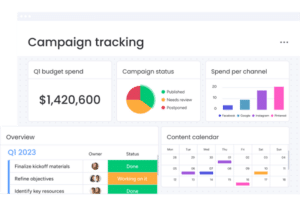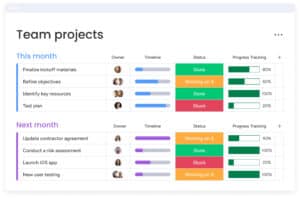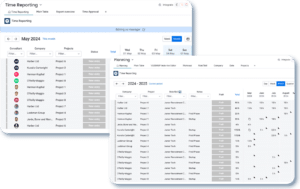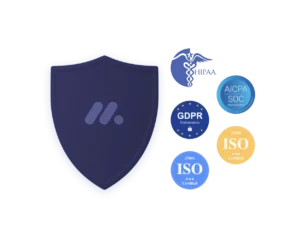Introduction
The Evolving World of Cloud Computing
In the rapidly advancing digital age, cloud computing has emerged as a cornerstone for modern business operations. However, as organizations increasingly turn to diverse cloud services to meet their varied needs, they encounter a complex landscape: the multi-cloud environment. This environment, while offering flexibility and scalability, introduces significant integration challenges in multi-cloud environments and their solutions.
Why Integration Matters in Multi-Cloud Environments
Integration in multi-cloud environments is not just a technical necessity; it’s a strategic imperative. Effective integration enables seamless data flow, application interoperability, and harmonious operation of disparate cloud services. Unfortunately, achieving this harmony is often easier said than done. Businesses face a multitude of hurdles, from data synchronization and security to application compatibility and compliance issues. This blog post aims to delve into these integration challenges in multi-cloud environments and their solutions, providing insights and strategies to navigate this complex landscape.
In the following sections, we’ll explore the nuances of multi-cloud environments, identify the key integration challenges they present, and discuss practical solutions to overcome these obstacles. Whether you’re a business leader, IT professional, or cloud enthusiast, understanding the intricacies of multi-cloud integration is essential in today’s cloud-centric world.
Understanding Multi-Cloud Environments
Defining the Multi-Cloud Strategy
The concept of a multi-cloud environment is pivotal in the modern IT landscape. Multi-cloud refers to the use of multiple cloud computing services from various providers in a single heterogeneous architecture. This approach allows businesses to leverage the unique strengths and capabilities of different cloud platforms, optimizing their operations for efficiency, cost-effectiveness, and scalability. However, with these advantages come significant integration challenges in multi-cloud environments and their solutions, which need careful consideration and strategic planning.
Why Businesses Choose Multi-Cloud
Organizations opt for multi-cloud strategies for various reasons. Some seek to avoid vendor lock-in, while others aim to meet specific regulatory requirements that a single cloud provider cannot fulfil. Additionally, different cloud providers may offer niche services that are more suited to certain business needs or workflows. However, harnessing these benefits requires addressing the integration challenges in multi-cloud environments and their solutions effectively.
The Evolving Cloud Computing Landscape
The landscape of cloud computing is continually evolving, driven by technological advancements and changing market demands. This evolution presents both opportunities and challenges, particularly in integration. As cloud technologies become more sophisticated, the complexity of integrating these disparate systems increases. Understanding this dynamic is crucial for any business seeking to navigate the integration challenges in multi-cloud environments and their solutions.
In the next section, we will delve into the specific challenges that arise when integrating various components within a multi-cloud environment and explore the solutions available to address these issues.
Omnitas Newsletter
Sign up for our monthly newsletter to stay up-to-date on our latest blog articles, videos and events!
Thank you!
You have successfully joined our subscriber list.
Key Integration Challenges in Multi-Cloud Environments
In a world where multi-cloud strategies are becoming the norm, understanding the integration challenges inherent in these environments is crucial. This section outlines the primary hurdles businesses face and sets the stage for discussing their solutions.
Data Integration and Management
One of the most significant integration challenges in multi-cloud environments is data integration and management. With data stored across multiple cloud platforms, ensuring consistent, timely, and secure data synchronization is a complex task. Challenges include:
- Data Synchronization: Keeping data updated and consistent across different cloud environments.
- Data Security and Privacy: Protecting data from breaches and ensuring compliance with various data protection regulations.
- Data Complexity: Managing the complexity and variety of data formats and structures.
Solutions to these challenges involve robust data governance policies, advanced data integration tools, and a strong emphasis on data security practices.
Application Integration
Another critical area of integration challenges in multi-cloud environments lies in application integration. Ensuring that applications function seamlessly across different cloud infrastructures can be daunting. Key challenges include:
- Application Compatibility: Ensuring applications are compatible across different cloud platforms.
- Performance Consistency: Maintaining consistent application performance and user experience in a multi-cloud setup.
To overcome these challenges, businesses often turn to middleware solutions, containerization, and microservices architectures, which offer greater flexibility and compatibility.
Network and Infrastructure Integration
Network and infrastructure integration presents its own set of integration challenges in multi-cloud environments. Achieving seamless connectivity and consistent performance across diverse cloud infrastructures involves:
- Networking Complexity: Handling the complexities of connecting various cloud environments with different networking protocols and standards.
- Infrastructure Consistency: Ensuring the infrastructure supports the required performance and scalability demands.
Solutions in this area include advanced networking technologies like software-defined networking (SDN) and adopting a unified infrastructure management approach.
Security and Compliance Integration
In multi-cloud environments, maintaining a consistent security posture and adhering to compliance requirements is a significant challenge. Issues here involve:
- Consistent Security Policies: Implementing and managing uniform security measures across all cloud platforms.
- Regulatory Compliance: Meeting various national and international regulatory standards.
Solutions include adopting comprehensive security frameworks and using compliance management tools to streamline adherence to regulatory requirements.
Vendor Management and Interoperability
Managing multiple cloud service providers and ensuring interoperability is another aspect of integration challenges in multi-cloud environments. This includes:
- Multiple Vendor Management: Coordinating between different cloud service providers.
- Interoperability Issues: Ensuring different cloud services and platforms can work together seamlessly.
Overcoming these challenges requires careful vendor selection, clear contractual agreements, and the use of standards-based technologies for better interoperability.
Solutions to Integration Challenges
Successfully navigating the integration challenges in multi-cloud environments requires a combination of strategic planning, technological solutions, and best practices. This section explores the various solutions that can help overcome these challenges.
Adopting a Unified Integration Strategy
A unified integration strategy is pivotal in addressing the integration challenges in multi-cloud environments. This involves:
- Creating a Cohesive Integration Framework: Develop an overarching plan that outlines how different cloud services will be integrated and managed.
- Utilizing Integration Platforms: Leveraging platforms like Integration Platform as a Service (iPaaS) that provide tools for connecting applications, data, and processes across multiple cloud environments.
Leveraging Integration Platforms and Middleware
Integration platforms and middleware play a crucial role in solving integration challenges in multi-cloud environments by:
- Facilitating Seamless Connectivity: These platforms help bridge the gap between different cloud services, ensuring smooth data and application integration.
- Reducing Complexity: Middleware can abstract the complexities of underlying cloud platforms, providing a more uniform interface for managing integrations.
Implementing Robust Data Governance
Effective data governance is essential in managing the integration challenges in multi-cloud environments, especially for data integration and security:
- Establishing Strong Data Management Policies: This includes setting clear guidelines for data access, storage, and transfer between cloud environments.
- Ensuring Data Security and Compliance: Implementing encryption, access controls, and regular audits to maintain data integrity and compliance with various regulations.
Embracing Automation and AI
Automation and artificial intelligence (AI) offer innovative solutions to the integration challenges in multi-cloud environments:
- Streamlining Integration Processes: Automation tools can help in managing repetitive tasks involved in integration, reducing manual errors and improving efficiency.
- AI-driven Insights for Optimization: AI algorithms can analyze complex multi-cloud environments to suggest optimizations and predict potential integration issues.
Best Practices for Multi-Cloud Integration
To effectively manage integration challenges in multi-cloud environments, it’s essential to adopt certain best practices. These practices not only facilitate smoother integration but also ensure long-term success and scalability.
Continuous Monitoring and Optimization
Continuous monitoring and optimisation are key to addressing integration challenges in multi-cloud environments and their solutions. This includes:
- Implementing Monitoring Tools: Utilize advanced monitoring solutions to track the performance and health of integrated multi-cloud systems.
- Regular Performance Assessment: Regularly assess the integration setup to identify and address any inefficiencies or bottlenecks.
Collaboration and Skill Development
Effective collaboration and continuous skill development among team members are vital in overcoming integration challenges in multi-cloud environments:
- Fostering a Collaborative Culture: Encourage collaboration between different teams, such as IT, security, and operations, to ensure a unified approach to multi-cloud integration.
- Investing in Training and Development: Continuously upskill your team in the latest cloud technologies and integration strategies to keep pace with evolving multi-cloud environments.
Choosing the Right Partners and Vendors
Selecting the right partners and vendors is crucial in managing integration challenges in multi-cloud environments and their solutions:
- Criteria for Vendor Selection: Establish clear criteria for selecting cloud service providers, considering factors like compatibility, support, and service level agreements (SLAs).
- Building Strategic Partnerships: Foster relationships with vendors that can provide expert guidance and support in managing multi-cloud integrations.
Implementing a Security-First Approach
Given the complexities of multi-cloud environments, adopting a security-first approach is imperative in addressing integration challenges:
- Prioritizing Security in Integration Processes: Ensure that security considerations are at the forefront of all integration decisions and implementations.
- Regular Security Audits and Compliance Checks: Conduct regular security audits and compliance checks to safeguard against potential vulnerabilities and ensure adherence to regulatory standards.
Leveraging Automation for Efficiency
Automation plays a crucial role in streamlining processes and reducing the manual workload involved in managing integration challenges in multi-cloud environments and their solutions:
- Automating Routine Tasks: Use automation tools to handle repetitive tasks, thereby reducing the potential for human error and increasing efficiency.
- Implementing AI for Predictive Analysis: Leverage AI technologies to predict and preemptively address potential integration issues.

Future Trends in Multi-Cloud Integration
As we look ahead, it’s important to understand the emerging trends that will shape the future of multi-cloud integration. These trends not only offer insights into the evolving landscape but also provide guidance on how to stay in the game of integration challenges in multi-cloud environments and their solutions.
Increased Emphasis on Edge Computing
The integration of edge computing with multi-cloud environments is becoming increasingly significant. This trend involves:
- Decentralizing Data Processing: Moving data processing closer to the source of data generation, thereby reducing latency and improving response times in multi-cloud setups.
- Edge Integration Challenges: Navigating the complexities of integrating edge computing architectures with multi-cloud environments, which can include issues of data synchronization and security.
Advancements in AI and Machine Learning
AI and machine learning continue to play a pivotal role in addressing integration challenges in multi-cloud environments and their solutions:
- Automated Decision-Making: AI-driven tools that can make real-time decisions on data routing, load balancing, and other integration aspects.
- Predictive Analytics for Integration: Utilizing machine learning to predict potential issues and optimize integration strategies proactively.
Growth of Serverless Architectures
Serverless computing is expected to have a profound impact on multi-cloud integration, offering:
- Simplified Integration Processes: Reducing the complexity of integration by abstracting the underlying infrastructure management.
- Addressing Scalability and Cost Challenges: Enabling more scalable and cost-effective solutions to multi-cloud integration challenges.
Enhanced Focus on Interoperability Standards
As multi-cloud environments become more prevalent, there will be a greater emphasis on interoperability standards:
- Developing Universal Standards: Efforts towards creating universal standards to simplify integration across different cloud platforms and services.
- Easing Integration Complexities: Reducing the technical challenges associated with integrating diverse cloud environments.
The Rise of Quantum Computing
Quantum computing, though still in its nascent stages, could revolutionize how we approach integration challenges in multi-cloud environments and their solutions:
- Handling Complex Integrations: Quantum computing’s immense processing power has the potential to manage highly complex integrations more efficiently.
- Long-term Implications: Anticipating the long-term implications of quantum computing on multi-cloud integration strategies.
Conclusion
As we have explored throughout this blog post, the integration challenges in multi-cloud environments and their solutions are multifaceted and continuously evolving. From data and application integration to security, compliance, and vendor management, these challenges require strategic planning, advanced technological solutions, and best practices tailored to the unique demands of multi-cloud architectures.
The future trends in multi-cloud integration, including edge computing, AI and machine learning, serverless architectures, interoperability standards, and the potential impact of quantum computing, indicate a dynamic and rapidly advancing field. Staying informed and adaptable is key to successfully navigating these complexities.
In conclusion, while multi-cloud environments present distinct challenges, the solutions and best practices discussed here offer a roadmap for effective integration. By understanding and proactively addressing these challenges, businesses can harness the full potential of multi-cloud environments, driving innovation, efficiency, and growth.
Stay Informed and Ahead of the Curve
If you found this blog post insightful and wish to stay updated on the latest trends and solutions related to multi-cloud environments, we invite you to subscribe to our monthly newsletter below. Our newsletter is a valuable resource for professionals seeking to stay ahead in the ever-evolving world of cloud computing, integration and more!
























